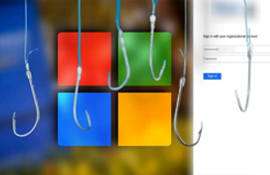phishing scam
-
Read moreA sophisticated phishing technique has been uncovered where attackers abuse Google’s OAuth system and DKIM verification to send emails that appear to come from no-reply@google.com, but actually lead users to fake support portals aimed at credential theft.
-
Read moreCybercriminals are using fake Microsoft Active Directory Federation Services (ADFS) login pages to steal usernames, passwords, and MFA codes from employees in education, healthcare, and government organizations. The stolen credentials allow hackers to access corporate email accounts, send phishing emails, and commit financial fraud.
-
Posted: September 30, 2024Comments: 3Views: 253Read moreCyber fraudsters have devised a new tactic by misusing the 1930 toll-free helpline number, intended for reporting cybercrimes, to deceive unsuspecting individuals. In a recent case reported in Hyderabad, a complainant was duped of ₹29.55 lakh after being coerced into joining a fraudulent video call by criminals posing as law enforcement officials.
-
Posted: May 09, 2024Views: 32Read more
In recent times, a clever phishing scheme has emerged, targeting unsuspecting users with a deceptive "pending mail" notification. Let's take a closer look at this scam









